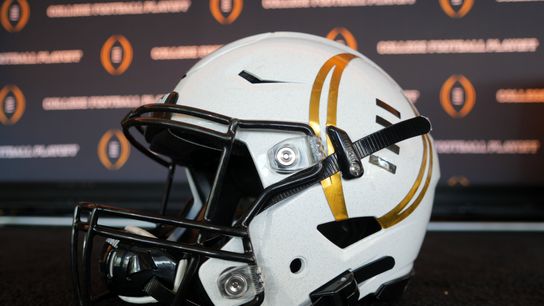After 10 seasons as a 4-team event, the College Football Playoff moves into its 12-team era later this year -- but it could be a short one. The bracket is set at 12 teams for this season and next, but nothing is set in stone beyond 2025.
Commissioners of the 10 FBS conferences and Notre Dame AD Jack Swarbrick will meet in Dallas over Monday and Tuesday with the express purpose of hammering out details on a format for 2026 and beyond. They'll likely be tense.
Any changes under the original 12-year contract (through 2025) required unanimous approval, but format changes for '26 and beyond will require a simple majority. And because of that, the SEC and Big Ten will likely throw their combined weight around to get what they want -- or else.
Or at least, that's what they want us to think going in to this week's meetings.
Yahoo's preview article is literally titled: With CFP still undecided on future format, SEC and Big Ten express doubts in commitment. SEC commissioner Greg Sankey tweeted Monday morning the cover of a book he read over the weekend: How to think about war: A guide to foreign policy.
So, yes, the meetings between college sports administrators this week likely won't be very collegial.
Take SMU as an example. The Mustangs are moving "up" from the Group of 5 to the Power 5 later this year. Under the current deal, each Power 5 team generates a $6 million check for their respective leagues... but it's far from guaranteed that the other conferences will agree to cut a check for SMU over the next two years.
“You have to have a unanimous vote to alter revenue distribution and diminish somebody else’s revenue,” Sankey told Yahoo. “That’s it.”
Cutting SMU in on Power 5 payments would reduce the other Power 5 schools' payouts by roughly $100,000 per year.
The Big Ten and SEC -- or is it SEC and Big Ten? -- announced their first formal partnership on Friday, and the message will likely be, We can hold a playoff without you; you can't stage one without us. Of the 202 slots in the 101 most-watched games of 2023, the Power 2 occupied 131, nearly two-thirds. Twenty-three of the 25 most-watched games involved at least one team that will play in the Power 2 this coming season, and the remaining two were the lightning-in-a-bottle fascination of Coach Prime in his debut season at Colorado.
Preview pieces by Yahoo and ESPN make clear that access will be a key sticking point. When the 12-team format was announced, it came with a 6+6 format, where half the field will be reserved for conference champs and half for at-larges -- and teams had to win their conference in order to earn a top-4 seed the accompanying first-round bye. The CFP board of managers expected to alter the format to 5+7 at its January meeting in response to the dissolution of the Pac-12, but Washington State president Kirk Schulz blocked the move. (Remember, all changes through 2025 require unanimous approval.)
With no format on the books for 2026 and beyond, don't be surprised for the SEC and Big Ten to push for a "12 best" format, which would essentially become a reproduction of the current format, just larger: a committee picks and seeds the top 12 teams, regardless of conference affiliation or champion status. The Power 2 could also push for a larger share of the financial pie to go toward them, as well as greater rewards for placing teams in the deeper rounds.
The current CFP TV contract is worth around $460 million annually. ESPN is reportedly close on an extension that would see the expanded Playoff remain with the network, at a cost of $1.3 billion. That's another $840 million, per year, to divvy up.
ESPN's story includes an interesting paragraph where it reads as if the network is negotiating with the conferences against expanding beyond 12 teams:
CFP leaders will likely want the TV contract to include a clause or some language that addresses the possibility of the field expanding beyond 12 teams. Although ESPN is considering paying the hefty price tag of about $1.3 billion, a field larger than 12 teams would lead to increased costs, and at some point, diminishing returns. CFP sources have indicated the commissioners, presidents and chancellors want full control of how large the field is.
But the key passage comes from the Yahoo story, where Sankey lays his (and, presumably, the Big Ten's) stance out:
Asked if he was committed to the CFP beyond 2025, Sankey said, “Yep, but we’ve got a lot to get right. The commitment is we want to see this get right.”
When the 12-team bracket was first proposed back in the summer of 2021, Sankey pointedly said those involved took great care to author a format that might not be best for themselves personally, but one that was best for college football as a whole.
A lot has changed since then. The key question now is, when Sankey says he wants to see his the new upcoming format "get right," does he mean right by college football, or just right by the SEC?
